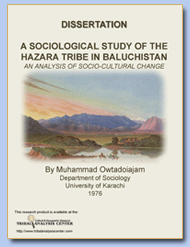External Reference Material
Page 1 ~ Page 2 ~ Page 3 ~ Page 4 ~ Page 5 ~ Page 6
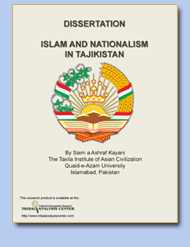 ISLAM AND NATIONALISM
ISLAM AND NATIONALISM
IN TAJIKISTAN
BY: Saim a Ashraf Kayani
The Taxila Institute of Asian Civilization
Quaid-e-Azam University
Islamabad, Pakistan
2006
362 PAGES - 3.12MB
Islamic resurgence is not a recent phenomenon. Islam possesses a long tradition revival (Tajdid) and reform (Isiah), dating from the early Islamic centuries to the present day. It had different forms that gripped the whole Muslim world in less or more acute form. This work identified three periods of resurgence in the history of Islam, Pre Modem or Islamic Revivalism, Modern or Islamic Reformism and Neo-Modern or Islamic Radicalism . Tajikistan remained part and parcel of their region while sharing a historical twirl, common faith and civilization with Muslims in the rest of the world. After passing through the period of Islamic revivalism and Islamic reformism Tajikistan has entered its third period of Islamic resurgence and that is Islamic radicalism.
This work emphasized the third phase of the Islamic resurgence. In the period of radicalization of Islam in Tajikistan, two issues must be separated, Islamic survival and Islamic revivalism. The Soviet period can be termed as Islamic survival; despite soviets atheist propaganda, religion remains the major identity of the people because like every Muslim of the world, Islam is part of Tajik culture.
The last ten years of the Soviet Union can be called the time of Islamic revival. With internal there are external factors that give a new shape to the Islam in Tajikistan and it is labeled as radical Islam, extreme Islam, militant Islam or fundamentalists. This is purely an external dimension and not the out growth of traditional, tolerant, and moderate Central Asian Islam. The internal factors for the revival of Islam in Tajikistan resulted in the acceptance of the external influence.
The post 9111 developments are indicative of resurgence of nationalism in the region, but in Tajikistan Islamic forces seems to have brighter prospects. since owing to the fragmentary nature of Tajik national identity, Islam can emerge as the only stabilising factor, an anchor and reference to which mass mobilisation can coalesce around. While being the member of international community, it has to rely on its nationalistic ideology.
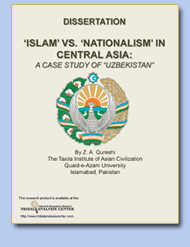 ‘ISLAM’ VS. ‘NATIONALISM’ IN
‘ISLAM’ VS. ‘NATIONALISM’ IN
CENTRAL ASIA:
A CASE STUDY OF “UZBEKISTAN”
BY: By Z. A. Qureshi
The Taxila Institute of Asian Civilization
Quaid-e-Azam University
Islamabad, Pakistan
December 2009
138 PAGES - 1.61MB
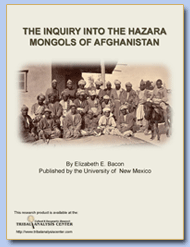 THE INQUIRY INTO THE HAZARA
MONGOLS OF AFGHANISTAN
THE INQUIRY INTO THE HAZARA
MONGOLS OF AFGHANISTAN
BY: Elizabeth E. Bacon
Published by the University of
New Mexico
1951
19 PAGES - 2MB

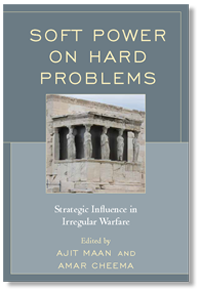

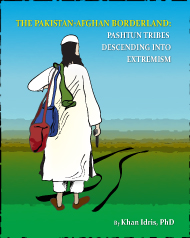
 The Private Journal of
The Private Journal of 